Related Research Articles
The term Judeo-Christian is used to group Christianity and Judaism together, either in reference to Christianity's derivation from Judaism, Christianity's recognition of Jewish scripture to constitute the Old Testament of the Christian Bible, or values supposed to be shared by the two religions. The term Judæo Christian first appeared in the 19th century as a word for Jewish converts to Christianity. The term has received much criticism, largely from Jewish thinkers, as relying on and perpetuating inherently antisemitic notions of supersessionism, as well as glossing over fundamental differences between Jewish and Christian thought, theology, culture and practice.

Meyer Lansky, known as the "Mob's Accountant", was an American organized crime figure who, along with his associate Charles "Lucky" Luciano, was instrumental in the development of the National Crime Syndicate in the United States.

MS St. Louis was a diesel-powered passenger ship properly referred to with the prefix MS or MV, built by the Bremer Vulkan shipyards in Bremen for HAPAG, better known in English as the Hamburg America Line. The ship was named after the city of St. Louis, Missouri. Her sister ship, MS Milwaukee, was also a diesel powered motor vessel owned by the Hamburg America Line. St. Louis regularly sailed the trans-Atlantic route from Hamburg to Halifax, Nova Scotia, and New York City, and made cruises to the Canary Islands, Madeira, Spain; and Morocco. St. Louis was built for both transatlantic liner service and for leisure cruises.
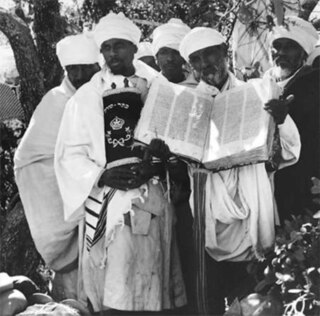
The Beta Israel, or Ethiopian Jews, are an African community of the Jewish diaspora. They coalesced in the Kingdom of Aksum and the Ethiopian Empire, which is currently divided between the Amhara Region and Tigray Region in modern-day Ethiopia. After the founding of the State of Israel in 1948, most of the Beta Israel immigrated to Israel or were evacuated from Africa through several initiatives by the Israeli government.
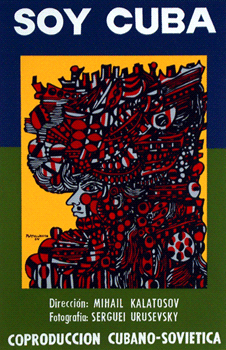
I Am Cuba is a 1964 film directed by Mikhail Kalatozov at Mosfilm. An international co-production between the Soviet Union and Cuba, it is an anthology film mixing political drama and propaganda. It was not received well by either the Russian or Cuban publics and was almost completely forgotten until it was re-discovered by filmmakers in the United States thirty years later. The acrobatic tracking shots and idiosyncratic mise-en-scène prompted Hollywood directors like Martin Scorsese to begin a campaign to restore the film in the early 1990s.
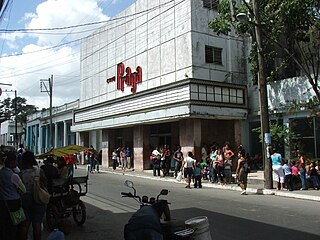
Cinema arrived in Cuba at the beginning of the 20th century. Before the Cuban Revolution of 1959, about 80 full-length films were produced in Cuba. Most of these films were melodramas. Following the revolution, Cuba entered what is considered the "Golden age" of Cuban cinema.
The history of the Jews in Latin America began with conversos who joined the Spanish and Portuguese expeditions to the continents. The Alhambra Decree of 1492 led to the mass conversion of Spain's Jews to Catholicism and the expulsion of those who refused to do so. However, the vast majority of conversos never made it to the New World and remained in Spain slowly assimilating to the dominant Catholic culture. This was due to the requirement by Spain's Blood Statutes to provide written documentation of Old Christian lineage to travel to the New World. However, the first Jews came with the first expedition of Christopher Columbus, including Rodrigo de Triana and Luis De Torres.
Tomás Gutiérrez Alea was a Cuban film director and screenwriter. Gutiérrez Alea wrote and directed more than twenty features, documentaries, and short films, which are known for his sharp insight into post-Revolutionary Cuba, and possess a delicate balance between dedication to the revolution and criticism of the social, economic, and political conditions of the country.
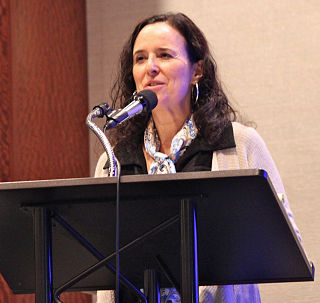
Ruth Behar is a Cuban-American anthropologist and writer. Her work includes academic studies, as well as poetry, memoir, and literary fiction. As an anthropologist, she has argued for the open adoption and acknowledgement of the subjective nature of research and participant-observers. She is a recipient of the Belpré Medal.
Jewish Cubans, Cuban Jews, or Cubans of Jewish heritage, have lived in the nation of Cuba for centuries. Some Cubans trace Jewish ancestry to Marranos who came as colonists, though few of these practice Judaism today. The majority of Cuban Jews are descended from European Jews who immigrated in the early 20th century. More than 24,000 Jews lived in Cuba in 1924, and still more immigrated to the country in the 1930s. Following the 1959 communist revolution, 94% of the country's Jews emigrated, most of them to the United States. In 2007 an estimated 1,500 known Jewish Cubans remained in the country, overwhelmingly located in Havana. Several hundred have since immigrated to Israel. Considered one of the most important Latin American Jewish sites, Beth Shalom Temple is the epicenter for current Jewish life in Cuba and still conducts weekly Shabbat services.

Cuba is a majority Christian nation, with Islam being one of the smallest minority faiths in the country. According to a 2011 Pew Research Center report, there were then 10,000 Muslims in Cuba who constitute less than 0.1% of the population. As of 2012, most of the 10,000 Cuban Muslims were converts to the religion.
Early criticism of Judaism and its texts, laws, and practices originated in inter-faith polemics between Christianity and Judaism. Important disputations in the Middle Ages gave rise to widely publicized criticisms. Modern criticisms also reflect the inter-branch Jewish schisms between Orthodox Judaism, Conservative Judaism, and Reform Judaism.
Fabio Grobart was a Marxist-Leninist revolutionary and politician who played an important role in the 1959 Cuban Revolution that overthrew Fulgencio Batista and led to Fidel Castro's rise to power.
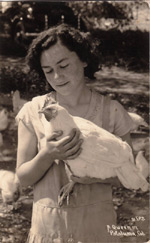
A Home on the Range: The Jewish Chicken Ranchers of Petaluma is a 2002 documentary by Bonnie Burt and Judith Montell about a group of Jews who fled pogroms in Eastern Europe and into prejudice in America. The group then organized a socialist society in the rural Northern California town of Petaluma and raised chickens to support themselves.
The Believers: Stories From Jewish Havana (1994) is a short documentary film directed by American Bonnie Burt. It explores the lives of a variety of Jews during the early post–Cold War years in the Cuban capital city, a time of material shortages and religious rebirth.

Adio Kerida: Goodbye my Dear Love is a 2002 documentary by American anthropologist Ruth Behar that follows her trip to Cuba, which her family left when she was four. She searches for memories from her past and investigates the dwindling Sephardic Jewish community that remains, estimated at less than 800 in 2011.

Trees Cry for Rain: A Sephardic Journey is a short documentary film by American documentary filmmaker Bonnie Burt that follows "America's Internet Champion of Ladino" Rachel Amado Bortnick, as she explores her Jewish-Turkish heritage and the vanishing world of Sephardic culture and the Ladino language. The film was officially released in 1989, but drew public attention in 1992 with screenings at a number of Jewish film festivals worldwide, including the San Francisco Jewish Film Festival and the Madrid "Festival de Cine Judio" which was dubbed "the biggest Jewish cultural event held in Spain in 500 years". This was followed by a public screening at the Lincoln Center for the Performing Arts in New York, and airing on The Jewish Channel.

The Jewish immigration to Puerto Rico began in the 15th century with the arrival of the anusim who accompanied Christopher Columbus on his second voyage. An open Jewish community did not flourish in the colony because Judaism was prohibited by the Spanish Inquisition. However, many migrated to mountainous parts of the island, far from the central power of San Juan, and continued to self-identify as Jews and practice Crypto-Judaism.

The Jewish left consists of Jews who identify with, or support, left-wing or left-liberal causes, consciously as Jews, either as individuals or through organizations. There is no one organization or movement which constitutes the Jewish left, however. Jews have been major forces in the history of the labor movement, the settlement house movement, the women's rights movement, anti-racist and anti-colonialist work, and anti-fascist and anti-capitalist organizations of many forms in Europe, the United States, Australia, Algeria, Iraq, Ethiopia, South Africa, and modern-day Israel. Jews have a history of involvement in anarchism, socialism, Marxism, and Western liberalism. Although the expression "on the left" covers a range of politics, many well-known figures "on the left" have been of Jews who were born into Jewish families and have various degrees of connection to Jewish communities, Jewish culture, Jewish tradition, or the Jewish religion in its many variants.
B'nai B'rith in Cuba, is a regional division of B'nai B'rith, an international Jewish social service organization, that was founded in 1943.
References
- "Abraham and Eugenia: Stories from Jewish Cuba". Bonnie Burt Productions. 1994. Archived from the original on October 29, 2008. Retrieved September 8, 2008.
- "A Jewish Film Homepage". JewishFilm.com. April 1996. Retrieved September 8, 2008.